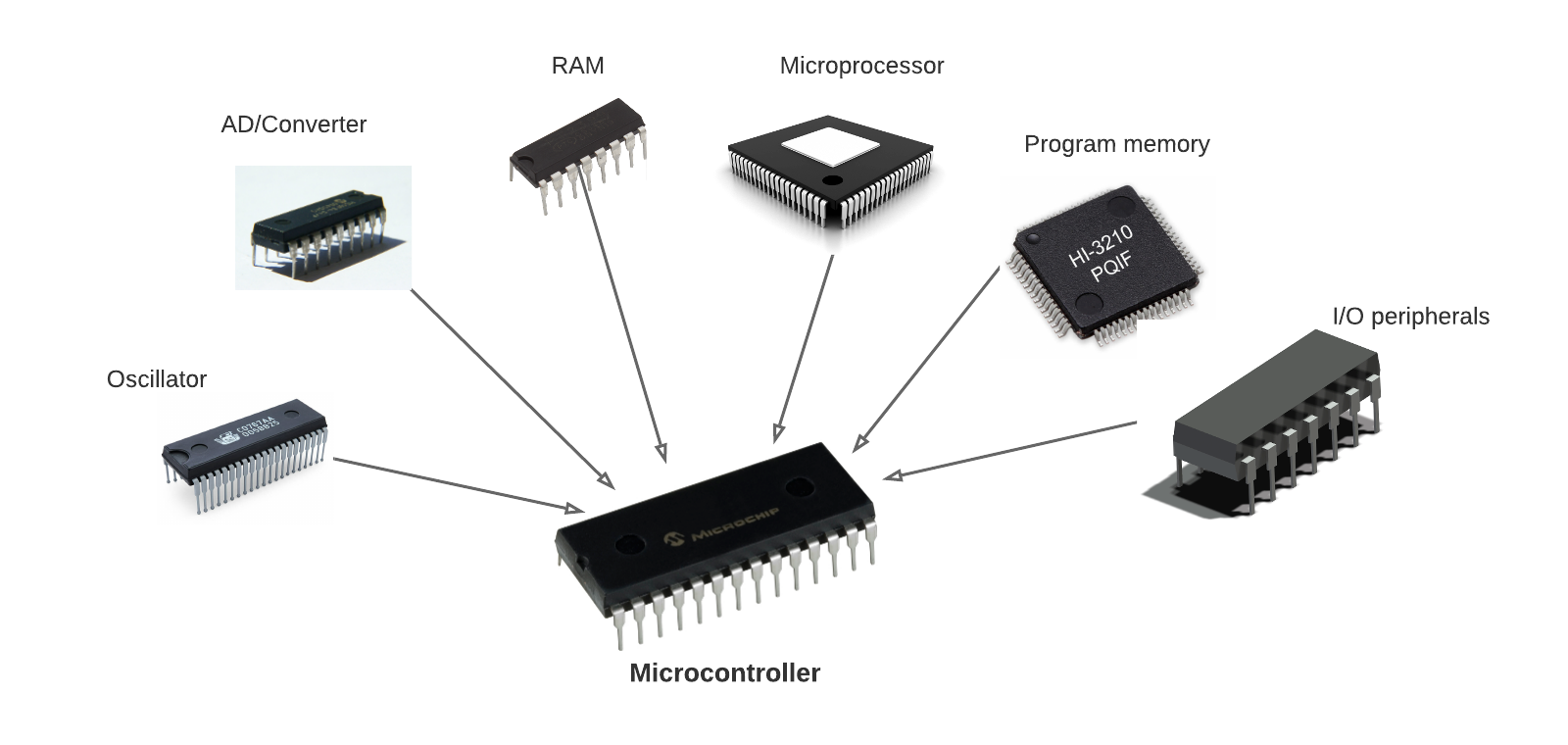What’s the difference between a microcontroller and a microprocessor?
A microcontroller and a microprocessor are both essential components of electronic devices, but they differ in terms of their architecture, capabilities, and applications.
A microcontroller is a compact integrated circuit (IC) that combines the functions of a microprocessor, memory, and input/output peripherals on a single chip. It is designed for embedded systems and small-scale applications. Microcontrollers are commonly found in devices such as consumer electronics, home appliances, automotive systems, and industrial control systems.
Key characteristics of microcontrollers include:
- Integration: Microcontrollers integrate all major components, including the central processing unit (CPU), memory (RAM and ROM), input/output ports, timers, and serial communication interfaces, onto a single chip.
- Peripherals: Microcontrollers are typically equipped with a variety of built-in peripherals, such as analog-to-digital converters (ADCs), digital-to-analog converters (DACs), UART (Universal Asynchronous Receiver-Transmitter), SPI (Serial Peripheral Interface), I2C (Inter-Integrated Circuit), and PWM (Pulse Width Modulation) controllers. These peripherals simplify the interfacing of the microcontroller with external devices.
- Real-time capabilities: Microcontrollers often have real-time operating systems (RTOS) or real-time features, allowing them to respond quickly and predictably to real-time events.
- Low power consumption: Microcontrollers are designed to operate with low power consumption, making them suitable for battery-powered devices or energy-efficient applications.
On the other hand, a microprocessor is a general-purpose programmable device that performs arithmetic, logic, control, and input/output operations. It focuses primarily on executing instructions and relies on external chips or components to provide additional functionality. Microprocessors are commonly used in personal computers, servers, high-performance systems, and devices that require substantial computational power.
Key characteristics of microprocessors include:
- Processing power: Microprocessors are optimized for high-speed processing and complex calculations. They typically have higher clock frequencies and larger instruction sets than microcontrollers.
- External components: Unlike microcontrollers, microprocessors do not integrate peripherals and memory on a single chip. They rely on separate chips or modules for memory, input/output, and other functionalities.
- Flexibility: Microprocessors offer more flexibility in terms of software and programming. They can run a variety of operating systems, such as Windows, Linux, or macOS, and support a wide range of applications.
- Higher power consumption: Due to their higher processing capabilities, microprocessors tend to consume more power compared to microcontrollers.
In summary, microcontrollers are compact, integrated devices that combine processing power, memory, and peripherals on a single chip. They are commonly used in embedded systems and applications that require low power consumption, real-time control, and integration of various functions. Microprocessors, on the other hand, are general-purpose processors designed for high-speed processing and complex calculations, often used in personal computers and systems that require significant computational power.


